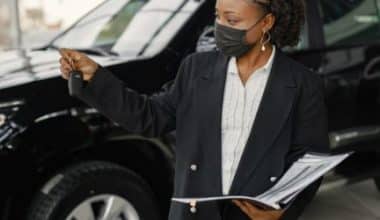Liability car insurance, also known as auto liability insurance helps financially protect you if you’re found at fault in an auto accident. It can help cover an injured person’s medical bills or repairs to someone’s vehicle. Drivers are legally required to carry liability insurance in most states.
“Liability” is just another word for responsibility. So, if you’re ever found at fault after an accident, whether you crash into another car, or a pedestrian or plow down your neighbor’s picturesque picket fence, you’re legally responsible (or liable) to pay for the damages you cause. With car liability insurance, your insurer foots the bill on your behalf.
Understanding liability car insurance
Liability car insurance is the part of a car insurance policy that provides financial protection for a driver who harms someone else or their property while operating a vehicle. Car liability insurance only covers injuries or damages to third parties and their property—not to the driver or the driver’s property, which may be separately covered by other parts of their policy.
The two components of liability car insurance are bodily injury liability and property damage liability. Every state except New Hampshire requires drivers to have some degree of liability coverage.
Liability car insurance helps cover the cost of damage resulting from a car accident. In many states, if a driver is found to be at fault in the accident, their insurance company will pay the property and medical expenses of other parties involved in the accident up to the limits set by the policy.
States with no-fault auto insurance, however, drivers involved in an accident must first file a claim with their own insurance companies regardless of who was at fault. In those states, drivers are typically required to purchase personal injury protection (PIP) coverage, which covers their accident-related medical expenses as well as those of their passengers.
Liability car insurance consists of two types of coverage:
Bodily injury
The bodily injury liability portion of a car insurance policy covers an at-fault driver, so they are not liable for others’ emergency and ongoing medical expenses, loss of income, or funeral costs. It also helps cover the policyholder’s legal fees when the accident results in a lawsuit.
Property damage
Property damage liability helps cover the costs of repairing or replacing the vehicles of other drivers involved in the accident. It also covers the damage done to other forms of property by the policyholder’s vehicle, such as fencing, mailboxes or buildings.
Liability car insurance limits
Liability car insurance has coverage limits, which is the maximum that your insurer will pay out for bodily injury and/or property damage to others if you are at fault in a car accident.
You can choose your liability limits. Most states require a minimum level of liability coverage, but it’s usually not enough to properly protect you if you’re in a crash.
Liability car insurance limits are typically shown as a series of three numbers. For example, you might see it written as 15/30/5. The first two numbers are for bodily injury coverage and the third number is for property damage coverage. For example, here’s what 15/30/15 means:
- 15 = $15,000 of bodily injury/death coverage for one person per accident.
- 30 = $30,000 of bodily injury/death coverage to more than one person per accident.
- 5 = $5,000 of property damage coverage per accident.
Liability limits of at least 100/300/100 are much better, and you may want even higher limits if you have a lot to lose in a car accident lawsuit. 100/300/100 means:
- $100,000 for bodily injury to one person per accident.
- $300,000 for bodily injury to more than one person per accident.
- $100,000 for property damage per accident.
Remember, liability insurance pays others. It does not cover your own injuries or damage to your vehicle.
Requirements for liability car insurance
Each state sets a minimum for how much liability coverage a motorist must carry. For example, a state might require all drivers to have liability insurance that covers $25,000 for injuries to one person, $50,000 for injuries to multiple people, $50,000 for death of one person, and $10,000 for property damage. Drivers can typically buy more liability insurance than their state’s required minimums, and it’s often smart to do so since medical bills can be very expensive.
If you have considerable assets to protect from a possible lawsuit, you may also want to consider buying an umbrella insurance policy, which can increase the liability coverage on both your auto and homeowners insurance policies to $1 million or more.
What does liability car insurance not cover?
Liability insurance doesn’t cover everything. For example, it doesn’t pay to repair your own vehicle or replace your car if a thief steals it. Other types of car insurance can cover those issues.
Here are some common types of car insurance:
- Collision insurance. This pays for car repair bills (minus your deductible) if you get into a car accident, no matter who is at fault for the accident. Collision insurance is an optional coverage type, meaning you’ll have to pay more to add it to your policy.
- Comprehensive insurance. This pays to repair or replace your car for problems such as floods, fires, falling objects, hail, collisions with animals, vandalism and car theft. Comprehensive insurance is an optional coverage type and you will have to pay more to add it to your policy.
- Uninsured and underinsured motorist coverage. These coverage types pay medical bills and other expenses for you and your passengers if a driver without liability insurance or not enough liability insurance crashes into you. Uninsured motorist coverage is required in some states and optional in others.
- Personal injury protection and MedPay. These coverage types pay for medical bills and other expenses for you and your passengers, no matter who was at fault for the accident. Personal injury protection (PIP) is required in some states but may be optional or not available in other states.
Liability car insurance coverage limits
Liability car insurance has dollar limits on each of its components, depending on the level of coverage you choose when you buy the policy. Those include:
Liability limit for property damage
This limit is the maximum amount of coverage for damage done to property. Any costs that exceed the limit become the responsibility of the at-fault driver.
Liability limit for bodily injury per person
The per-person limit is the maximum amount that the insurance company will pay out for each individual who has been injured in an accident.
Liability limit for bodily injury per accident
The liability limit per accident is a financial cap for the total amount that the insurance company will pay for all of the individuals involved in an accident. In other words, the policy will cover medical expenses for those injured in an accident by the at-fault driver, but only up to a predetermined total. The at-fault driver would then be liable for any medical expenses above that limit.
How much does liability insurance cost?
The cost of liability insurance is based on several factors, including:
- Your driving history, such as speeding tickets and other moving violations
- Your claims history
- The amount of coverage you buy
- Your age
- Other factors can vary by state and company, including gender, marital status, occupation and credit.
Auto insurance rates vary widely among companies because they all have their own way of calculating rates. You might be able to find the cheapest liability-only car insurance for a much better price when shopping around. That’s why it’s a good idea to compare car insurance quotes from several companies.
How much liability car insurance do you need?
Nearly every state requires at least some liability coverage (or proof you have enough cash on the side to pay for damages yourself). The only exceptions are rural parts of Alaska without requirements and Virginia, where residents can waive liability coverage if they pay the state $500 annually.
While many states have low liability limit requirements, you may want a higher limit to protect your savings and other financial assets if you cause an accident. Medical bills and car repairs can be incredibly expensive, and if you’re found at fault, you will be responsible for the balance. A split second could be the difference between a normal day and the beginning of bankruptcy.
For example, say you hit another car, total it and seriously injure four people. If you’re at fault, you’ll be responsible for the value of the car, the medical bills of all four passengers, and any damage to the roadway. Now, you’re looking at paying almost $500,000 in medical bills and another $50,000 for the car and damaged roadway. Do you have enough liability auto insurance to pay for those costs?
If you don’t have enough coverage — that is, if your bodily injury and property damage limits aren’t that high, respectively — you can be held personally responsible for any excess. The people you injured can sue you for that money, and you could end up losing your home or, in some states, having your wages withheld. The more you have to lose, the more they can come after.
Liability vs. full-coverage automobile insurance
In addition to the liability coverage your state requires, insurers offer coverage known as collision and comprehensive insurance. A policy with all three—liability, collision, and comprehensive—is sometimes referred to as providing “full coverage.” A full-coverage policy will cost you more than a liability-only policy, but it will also protect you against more financial risks.
Unlike property damage liability insurance, which covers another person’s car if you damage it, collision and comprehensive insurance cover your own car.
- Collision insurance helps pay to repair or replace your car if it’s damaged in an accident involving another vehicle or an object, such as a tree or a wall.
- Comprehensive insurance helps pay to replace or repair your vehicle if it’s stolen or damaged in an incident that’s not a collision. Comprehensive typically covers damage from fire, vandalism, or falling objects, such as a large tree limb or hail.
These two types of insurance are optional for vehicles that are owned free and clear. But if the vehicle is financed, the lender may require that you have them. The lender wants to protect the vehicle’s value since it serves as collateral for the loan. Even if you aren’t required to have collision or comprehensive insurance, you may want to buy it unless you could easily pay a major repair bill out of pocket.
Because many of these provisions can vary from state to state, it’s worth consulting a knowledgeable insurance agent or broker who is familiar with your state’s rules. It’s also helpful to compare car insurance rates to ensure that you’re getting the best deal on coverage.
Recommended Articles
- Motorcycle Insurance in Texas: Coverage, Cost & Top Providers
- BROAD FORM INSURANCE: What Is It & What Does It Cover?
- HOW TO SHOP FOR CAR INSURANCE: Easy Methods & Steps
- Best Car Warranty Companies For 2023: Reviewed
- Connect Car Insurance: Review 2023
- Best Commercial Auto Insurance Providers 2023






